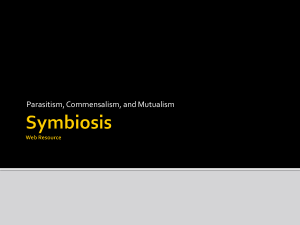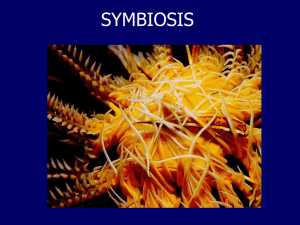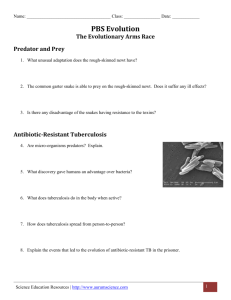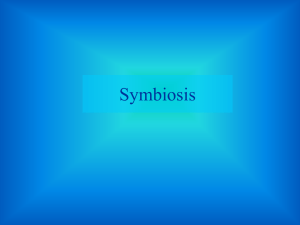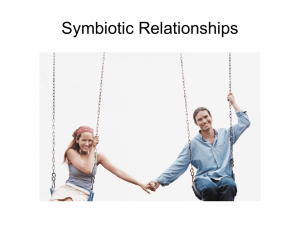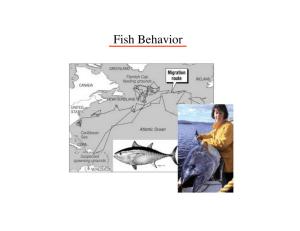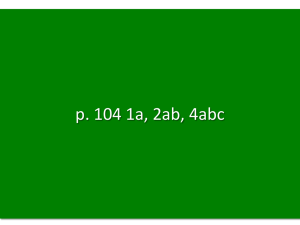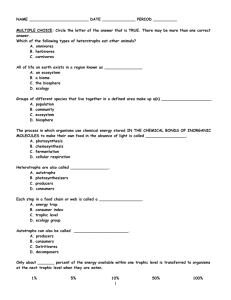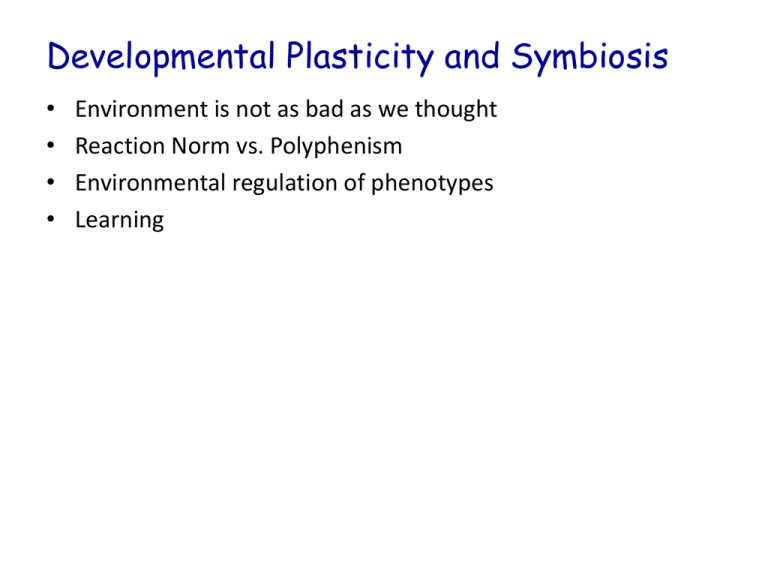
Developmental Plasticity and Symbiosis
•
•
•
•
Environment is not as bad as we thought
Reaction Norm vs. Polyphenism
Environmental regulation of phenotypes
Learning
Nature vs Nurture?
Plasticity
• Phenotypic
• Developmental
Reaction Norm
Polyphenism
Dung Beetles and Ants: Diet-induced
polyphenisms
• Queen Ant vs Worker Ant
• Horned male Dung Beetles:
Protector of the Female.
Diet and Gene regulation
• DNA methylation
• viable-yellow of Agoutitransposon in cis-regulatory
element.
Predator-induced Polyphenisms
• Kairomones
Predator-induced Polyphenisms: Amphibians
• More muscle mass in tail.
• Kairomones can make the tadpole
more sensitive to environmental
insults: fertilizers et al.
Figure 17.6
Good Vibrations
Fig. 17.7
Geronimo
Temperature and Sex
Temperature and Butterfly wings
Environment, Anxiety, and DNA methylation
Learning
• No division
• New Neurons
• Changing connections
Nervous system: Plasticity and Learning
Experience and vision
• Hubel and Wiesel (1960s)
• Right eye occluded for 3
months
• Occurs within 4 to 6 weeks
of birth
Life cycle and Polyphenisms
• Diapause
• Larval Settlement
Spadefoot Toad
Symbiosis
• Parasitism
• Mutualism
• Commensalism
Developmental Symbiosis: passing on the
help
• Vertical transmission
• Horizontal transmission
• Wolbachia infection
Shedding light on symbiosis
• Euprymna-Vibrio
• Light organ development and luminescence
Obligate mutualism
Filariasis worm and Wolbachia
Spotted Salamander and Oophilia amblystomatis
Symbiosis in mammalian intestine

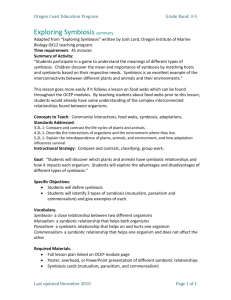
![Symbiosis[1]](http://s2.studylib.net/store/data/005449742_1-2c9de7b7b178f521480e9109673f342e-300x300.png)

